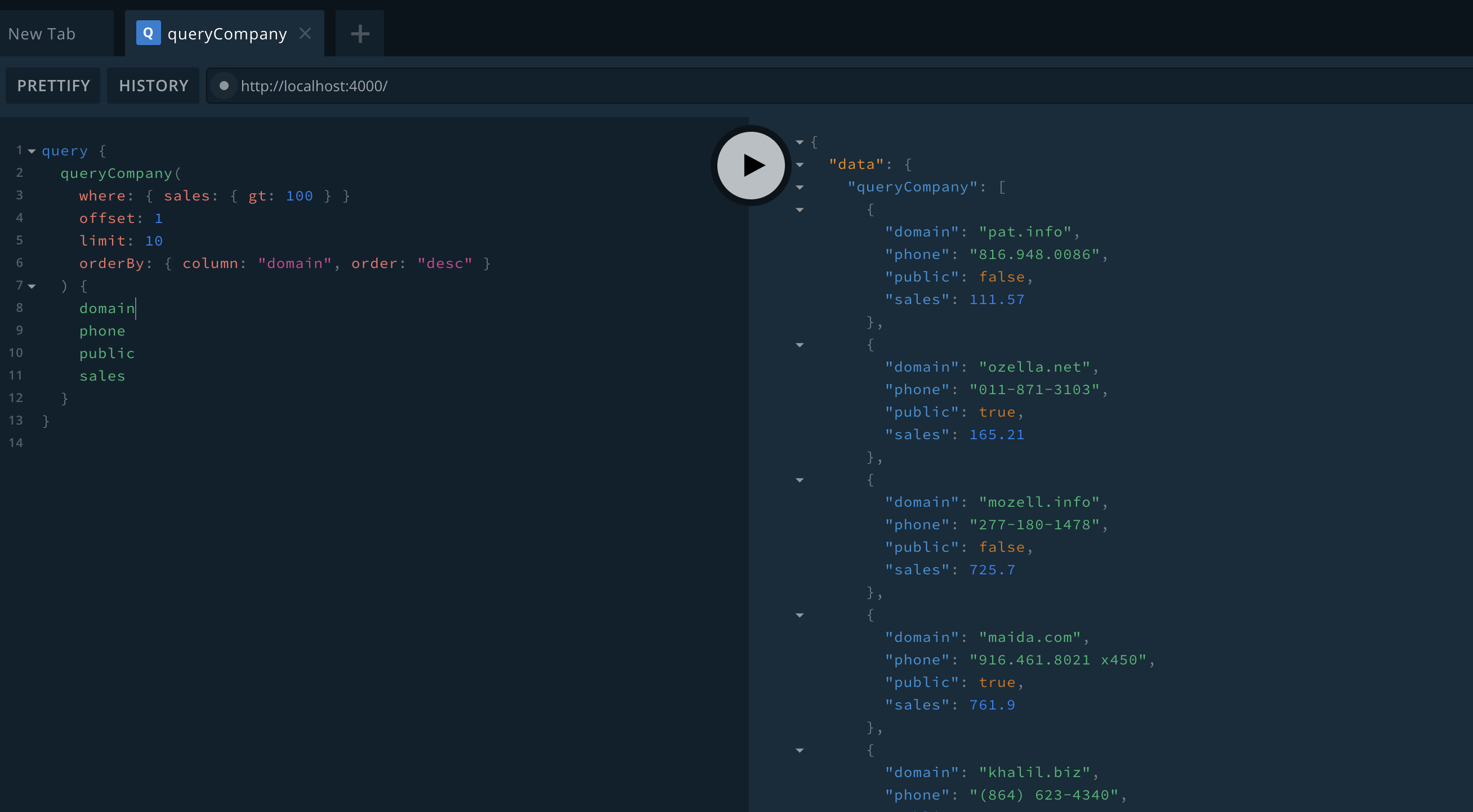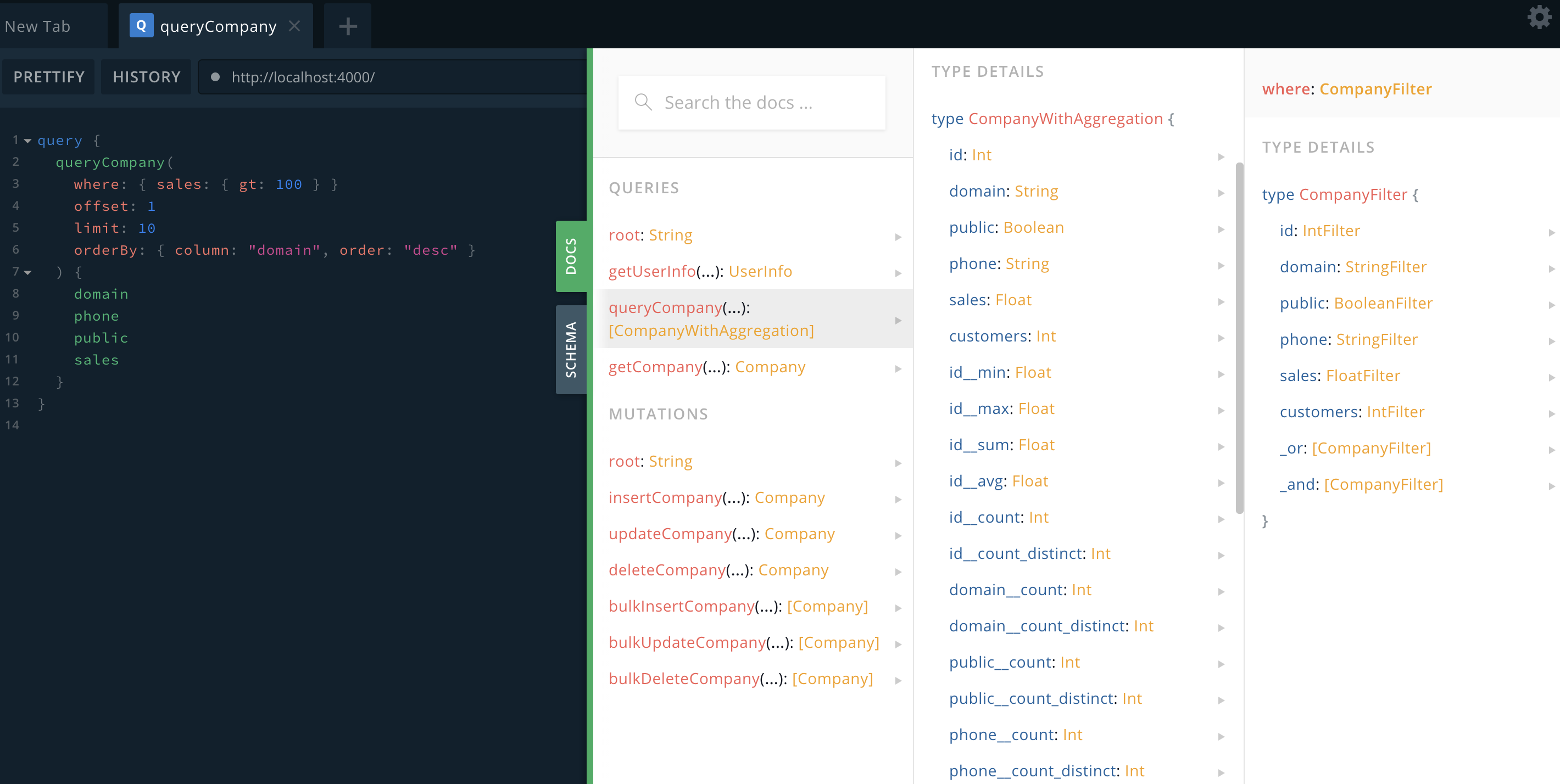graphql-server-crud
v1.0.5
Published
Create GraphQL API server CRUD without boilerplate code
Downloads
56
Maintainers
Readme
Please go to https://nostalgic-perlman-fe9f48.netlify.com for the complete documentation.
Introduction
This is a lightweight javascript framework/library to help you build a GraphQL server efficiently. It aims to reduce your code size, save you time and gives you the flexibilities you need.
Philosophy
- Reduce the CRUD related code you need to write.
- It is code, not black box service, you have full control about logic, deployment, etc.
- You don't need to learn new random definitions: syntax, directive, magic, etc.
- It coexists with your existing project.
- Support multiple databases: it should support what knex supports.
- It is not discouraged to build your own complicate queries to support complicate use case.
Getting Started
The following is to give you a quick idea of how to get started. You may want to refer to a full example here, which contains test data.
Install package
npm install graphql-server-crudDefine the "model"
const { ModelBase } = require('graphql-server-crud')
const { knex } = require('../db') // this is your typical knex db
class Company extends ModelBase {
knex = knex
table = 'companies'
fields = {
id: 'Int',
domain: 'String',
public: 'Boolean',
phone: 'String',
sales: 'Float',
customers: 'Int'
}
}Add auto-generated typeDefs and resolvers to your root
Add these followinng lines to your root typeDefs and resolvers variables.
// Add default typeDefs and resolvers
// You only need to do this once regardless of the number of models you have
const { addTypeDefs, addResolvers } = require('graphql-server-crud')
const models = require('./models')
addTypeDefs(typeDefs, models)
addResolvers(resolvers, models)You can check a full example file here.
That is it!
You have a basic CRUD endpoint for Company now.
Run a simple query:

The schema:

A more complicate query example
query {
# queryAuthorJoinPost is a derived table(runtime view)
queryAuthorJoinPost(
# complicate filter condition
where: {
_and: [
{ _or: [{ id: { gt: 10 }, email: { gt: "k" } }, { id: { lt: 5 } }] }
{ first_name: { gt: "OK" } }
]
}
# top level orderBy
orderBy: [{ column: "score__max", order: "desc" }]
limit: 10
offset: 0
# support aggregation
groupBy: ["id", "email"]
having: {
age__avg: { gt: 30 }
id: { nin: [1, 2, 6] }
email: { null: false }
}
) {
id
email
# aggregations
age__avg
age__count
age__count_distinct
score__max
# nested field in group by
review(
on: { star: { gt: 2 } }
limit: 5
offset: 1
orderBy: [{ column: "star", order: "desc" }]
) {
id
star
}
}
}How it works
You define a model. The library generates common GraphQL schema, resolvers logic for you. To support complicate search queries(filter, groupBy, join, nested fields, etc), it also has a built-in compiler to compile the filter input to knex code. A ModelBase class is provided to you so that you can build your custom logic on top of it. You can also use the model as your database client in any place of your logic.
Features
- logic generation for schema
- logic generation for common resolvers
- support queries: get, list(search by filters)
- support mutation: insert, delete, update, bulk insert, bulk delete, bulk update
- support common where filters: =, <>, >, <, between, in, or, and, etc.
- support common aggregations: groupBy, having, sum, avg, min, max, count, distinct, etc.
- support common components in a query: offset, limit, order by, etc.
- support nested objects queries
- no N+1 problem for common queries
- coexists with your current code, custom schema, custom resolver.
- it does not care if you are using graphql-server, graphql-lambda, or graphql-express, etc.
Please go to https://nostalgic-perlman-fe9f48.netlify.com for the complete documentation.
Contributing
You are always welcome to contribute to the project.
Thanks for all your wonderful PRs, issues and ideas.








